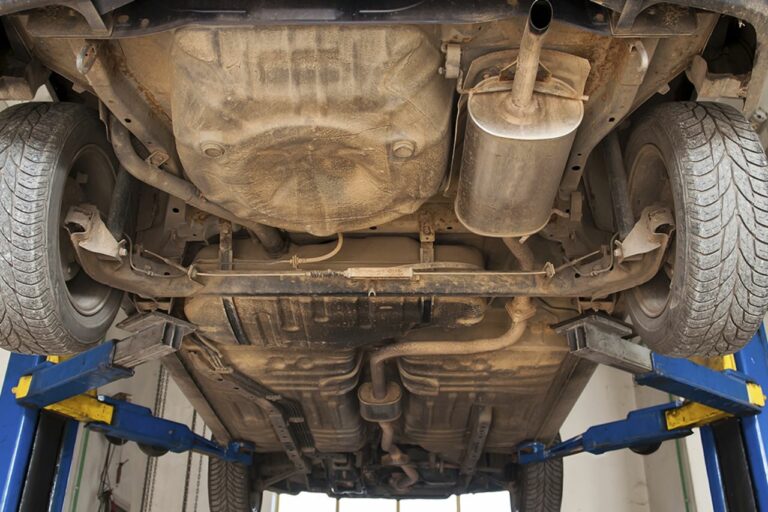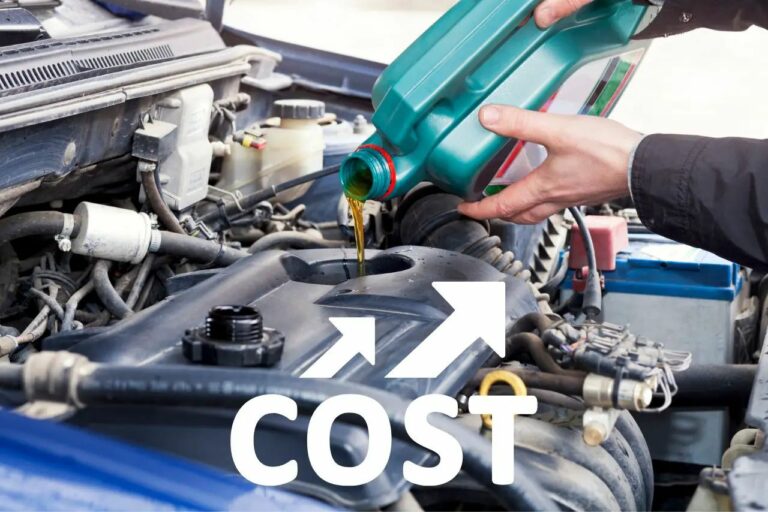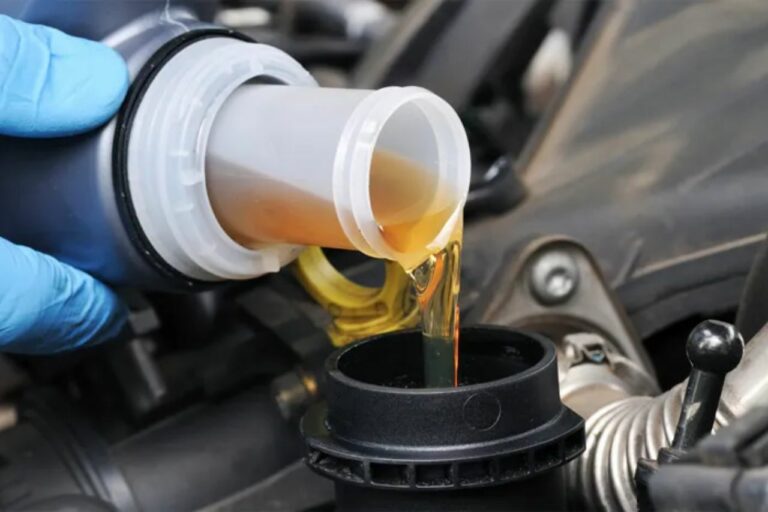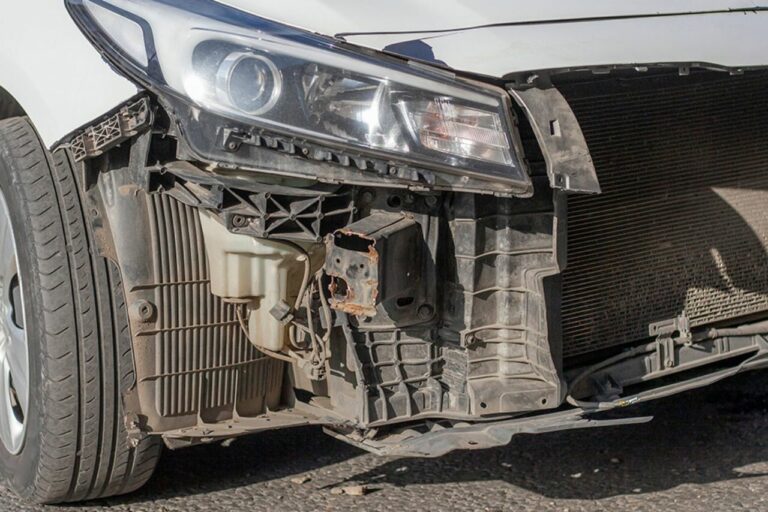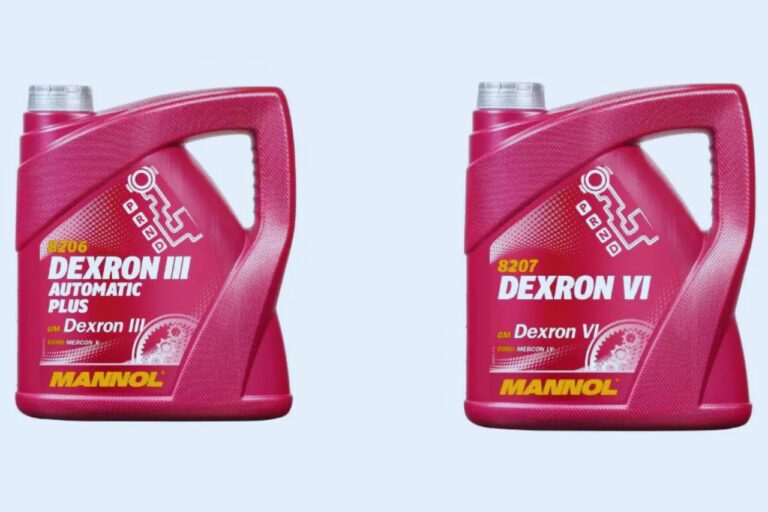Can You Survive In T-Boned At 40 Mph? (Must Read This First!)
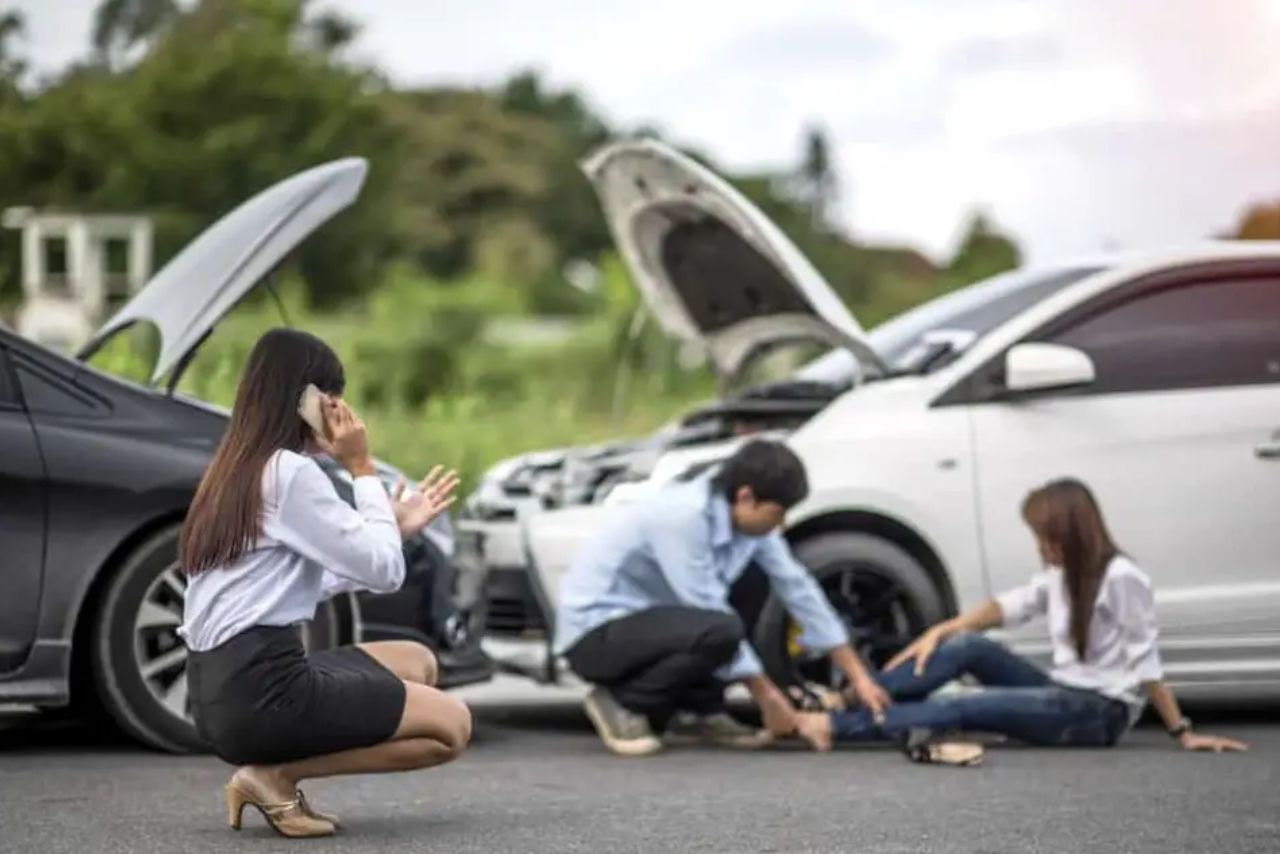
Have you ever wondered what would happen if you were T-boned by another car while driving at 40 mph?
Would you be able to survive such a high-impact collision?
The physics of T-bone collisions can be complicated and the injuries that can result from them can be life-threatening.
However, there are certain factors that can affect your chances of survival in such a scenario.
Can You Survive In T-Boned At 40 Mph?
In general, the chances of survival in a T-bone collision at 40 mph depend on various factors such as the type of vehicle, safety features, and the position of the impact, among others. It is always important to prioritize safe driving practices and follow traffic rules to minimize the risk of accidents.
T-bone collisions occur when a vehicle is struck on its side by another vehicle, forming the shape of a T.
These types of collisions are often considered one of the most dangerous types of car accidents due to the lack of protection on the sides of the car.
In this article, we will explore the physics of T-bone collisions, the types of injuries that may occur, the factors that can affect your chances of survival, and the importance of vehicle safety features.
We will also look at emergency response and medical treatment, legal considerations, recovery and rehabilitation, and prevention strategies.
By understanding these factors, you can better prepare yourself in the event of a T-bone collision and increase your chances of survival.
Understanding the Physics of T-Bone Collisions:
You might be wondering, “Can you survive a T-bone collision at 40 mph?” Well, let’s delve into the physics of it all.
Understanding collision dynamics is crucial in answering this question.
A T-bone collision occurs when one vehicle crashes into the side of another vehicle, forming a “T”shape.
This type of collision is also known as a broadside collision and is considered one of the most dangerous types of collisions.
To understand the impact force analysis of a T-bone collision, we need to look at the velocity of the vehicles involved.
In this case, we have a vehicle traveling at 40 mph, which means it is moving at a speed of about 58.7 feet per second.
When this vehicle collides with another vehicle, the impact force generated is determined by the mass and velocity of the vehicles.
The higher the velocity, the greater the impact force, which can have devastating consequences.
Overall, surviving a T-bone collision at 40 mph is unlikely, especially if the vehicle is not equipped with advanced safety features such as airbags and seat belts.
Types of Injuries That May Occur:
As you delve deeper into the types of injuries that may occur in a T-bone collision, you’ll encounter three common categories:
- Head and brain injuries can range from mild concussions to severe traumatic brain injuries that can impact your cognitive abilities and motor skills.
- Neck and spinal injuries can result in chronic pain, limited mobility, and even paralysis.
- Chest and abdominal injuries can lead to internal bleeding, organ damage, and other life-threatening conditions.
Understanding these types of injuries is crucial in assessing the potential risks and consequences of T-bone collisions.
Head and Brain Injuries:
Head and brain injuries can be severe and life-threatening if involved in a car accident, such as being t-boned at 40 mph.
The impact of the crash can cause the head to hit the side window or dashboard, leading to a concussion, skull fracture, or even brain damage.
Head injury symptoms may include headache, dizziness, confusion, nausea, and loss of consciousness.
If you experience any of these symptoms after a car accident, seek medical attention immediately.
Long term effects of brain injuries may include memory loss, difficulty concentrating, personality changes, and even permanent disability.
The severity of the injury and the time it takes to recover can vary depending on the individual and the extent of the damage.
It is crucial to follow the doctor’s orders and attend therapy sessions to improve your chances of a full recovery.
Even if you feel fine after a car accident, it’s still essential to get a medical evaluation as some symptoms may take time to appear.
Don’t take any chances with your health and safety.
Neck and Spinal Injuries:
Feeling a sharp pain in your neck or back after a car accident can be a sign of a serious spinal injury, which can lead to long-term complications if left untreated.
The force of a T-bone collision at 40 mph can cause your neck to violently jerk back and forth, potentially damaging your spinal cord.
This can result in a range of symptoms, including pain, numbness, and tingling sensations.
To prevent spinal injuries, it’s important to wear a seatbelt and properly adjust the headrest in your car.
These simple prevention methods can significantly reduce the risk of severe spinal injuries in the event of a car accident.
If you’ve sustained a spinal injury in a car accident, there are rehabilitation options available to help you recover.
These may include physical therapy, medication, and surgery, depending on the severity of your injury.
It’s important to seek medical attention as soon as possible to ensure the best possible outcome for your recovery.
Chest and Abdominal Injuries:
Protecting your chest and abdomen during a car accident is crucial as these areas are highly vulnerable to serious injuries.
In a T-bone collision at 40 mph, the force of the impact can cause broken ribs, internal bleeding, and damage to vital organs such as the liver, spleen, and kidneys.
The chest and abdominal injuries can be life-threatening, and it’s important to take preventive measures to minimize the risk of harm.
Prevention methods include wearing a seatbelt, which is one of the most effective ways to protect your chest and abdomen in a car accident.
The seatbelt keeps you securely in your seat, preventing your body from being thrown forward and hitting the dashboard or steering wheel.
Additionally, it’s important to ensure that your airbags are functioning correctly, as they can help reduce the impact of the collision. In case of an accident, seek immediate medical attention and follow the post-accident care instructions provided by your healthcare provider. Early diagnosis and treatment can prevent complications and improve your chances of a full recovery.
Factors That Can Affect Your Chances of Survival:
To increase your chances of survival in a t-bone collision at 40 mph, you should always wear your seatbelt and maintain a safe distance from other vehicles on the road.
Seatbelts are designed to keep you in your seat and prevent you from colliding with the steering wheel, dashboard, or windshield.
In a t-bone collision, the impact force is usually directed towards the side of the vehicle, which can cause serious injuries to your chest, abdomen, and pelvis.
However, studies have shown that wearing a seatbelt can reduce the risk of death or serious injury by up to 50%.
Another factor that can affect your chances of survival in a t-bone collision is the size and weight of the vehicles involved.
The force of impact increases with the speed and mass of the vehicles, so it’s important to be aware of the size and weight of the vehicles around you.
For example, a collision between a passenger car and a large truck can be much more severe than a collision between two passenger cars.
Additionally, the angle of impact can also affect the severity of the collision.
A head-on collision or a collision at an angle of less than 45 degrees is more likely to result in serious injuries or death.
By being aware of these factors and taking precautions such as wearing your seatbelt and maintaining a safe distance from other vehicles, you can increase your chances of surviving a t-bone collision.
| Factor | Impact on Survival Chances | ||
|---|---|---|---|
| Seatbelt Usage | Increases chances of survival by up to 50% | ||
| Vehicle Size & Weight | Greater mass and speed increases force of impact | ||
| Angle of Impact | Head-on or less than 45 degrees is more likely to result in serious injury or death | ||
| Distance from Other Vehicles | Maintaining a safe distance can reduce the risk of collision | and give the driver more time to react to sudden changes in traffic. |
Importance of Vehicle Safety Features:
Make sure your vehicle has the latest safety features to give you and your loved ones peace of mind on the road.
Vehicle technology has come a long way in recent years, and there are now several safety features that can help you survive a high-speed collision.
Here are four essential safety features that you should look for when shopping for a new car:
- Automatic emergency braking (AEB): This technology uses sensors to detect when a collision is imminent and can automatically apply the brakes to prevent or reduce the severity of a crash.
- Lane departure warning (LDW): This system uses cameras or sensors to monitor your vehicle’s position on the road and will provide an alert if you start to drift out of your lane.
- Blind-spot monitoring (BSM): This technology uses sensors to detect when there is a vehicle in your blind spot and will provide an alert to warn you before you change lanes.
- Crash testing: Look for a vehicle with a high safety rating from organizations like the National Highway Traffic Safety Administration (NHTSA) or the Insurance Institute for Highway Safety (IIHS). These ratings are based on crash testing data and can give you a good idea of how well a vehicle will perform in a collision.
Investing in a vehicle with these safety features can make a significant difference in your chances of surviving a high-speed collision.
While no safety feature can guarantee your safety, they can provide an added layer of protection and help reduce the risk of serious injury or death.
So, take the time to research and choose a vehicle that has the latest safety technology and a high safety rating to ensure you and your loved ones are as safe as possible on the road.
Emergency Response and Medical Treatment:
As a reader, you need to understand the importance of emergency response and medical treatment in case of a car accident.
First responders play a crucial role in providing immediate assistance to victims.
Emergency Medical Services (EMS) transport the injured to trauma centers where they receive specialized medical care.
These key components of the emergency response system can significantly improve the chances of survival and recovery for those involved in a car accident.
First Responders:
You’ll be grateful for the quick response of first responders if you’re ever involved in a T-bone accident at 40 mph.
These professionals are trained to handle emergencies and have the necessary equipment to provide immediate care.
First responders, also known as emergency medical services (EMS), are the first people to arrive on the scene of an accident.
To become a first responder, individuals must complete training programs that teach them how to assess and manage emergency situations.
These programs cover topics such as basic life support, advanced cardiac life support, and trauma management.
In addition to training, first responders must also meet equipment requirements.
They need to have access to medical supplies, such as bandages, oxygen tanks, and defibrillators, as well as communication devices to coordinate with hospitals and other emergency services.
With their training and equipment, first responders are able to provide life-saving care to those involved in T-bone accidents.
Emergency Medical Services:
Emergency Medical Services, or EMS, play a crucial role in providing immediate care during accidents and other emergency situations.
When a t-bone accident occurs at 40 mph, EMS personnel are among the first to arrive on the scene, and their quick response can make all the difference between life and death.
They’re trained to assess the situation and provide the necessary medical procedures to stabilize the patient and transport them to the hospital.
EMS personnel use a variety of medical procedures to treat patients in emergency situations.
They’re equipped with advanced medical equipment and medications to manage pain, control bleeding, and stabilize vital signs.
They also provide basic life support services such as cardiopulmonary resuscitation (CPR), oxygen administration, and airway management.
EMS personnel work closely with other emergency response teams, such as firefighters and police officers, to ensure that the patient receives the necessary care as quickly as possible.
In short, EMS is a critical component of emergency response, and their work is essential in ensuring the best possible outcomes for patients involved in accidents or other emergency situations.
Trauma Centers:
Now that you’ve got a good understanding of Emergency Medical Services, let’s talk about Trauma Centers.
If you were to get T-boned at 40 mph, you’d likely require treatment at a trauma center.
These centers are specialized facilities that provide immediate medical attention to individuals with life-threatening injuries, such as those sustained in a high-speed car accident.
Trauma center availability is an important factor to consider when assessing your chances of survival after a serious accident.
The cost of medical treatment at these centers can be quite high, so it’s important to know the location of the nearest trauma center to your home or workplace.
Additionally, some trauma centers only accept patients with certain types of injuries or those who meet certain criteria, so it’s important to understand the capabilities of each center in your area.
Here are a few key things to keep in mind when considering trauma center availability:
- Trauma centers are designated by level, with Level I centers offering the highest level of care and Level IV centers offering the lowest level of care.
- The availability of trauma centers can vary by region and state, with urban areas typically having more options than rural areas.
- Trauma centers may be affiliated with specific hospitals or healthcare systems, so it’s important to know which facilities are in your network.
- Insurance coverage and out-of-pocket costs can vary significantly depending on the trauma center and the type of injury being treated, so it’s important to understand your policy and seek out cost estimates whenever possible.
Legal Considerations:
If you’re involved in a t-bone accident at 40 mph, it’s important to consider the legal implications and potential consequences that may arise.
One of the main concerns is legal liability. In a t-bone accident, it’s common for both parties to argue that the other was at fault.
In these situations, it’s important to have clear evidence to support your case.
This may include witness statements, photographs of the accident scene, and police reports.
Another important consideration is insurance coverage. In most cases, both parties will have insurance that will cover the damages and injuries sustained in the accident. However, the amount of coverage may not be sufficient to cover all of the costs.
In some cases, the at-fault party may be required to pay out of pocket for any damages or injuries that exceed their insurance coverage.
It’s important to consult with an experienced personal injury attorney who can help you navigate the legal system and ensure that you receive the compensation that you’re entitled to.
Recovery and Rehabilitation:
Once the initial shock wears off and you’ve received medical attention, you’ll likely begin the process of recovery and rehabilitation after being T-boned at 40 mph.
This can be a challenging and lengthy process, as you may have suffered from a range of physical injuries, such as broken bones or whiplash.
However, it’s important to also consider the psychological impact of the accident, which can be just as significant as the physical injuries.
One common form of treatment during recovery and rehabilitation is physical therapy, which can help you regain strength, mobility, and flexibility after your accident.
This may involve exercises to improve your range of motion, as well as stretches and other techniques to help reduce pain and inflammation.
Additionally, occupational therapy can help you relearn basic daily living skills, such as dressing or eating, if you’ve suffered from more severe injuries. While it can be a difficult and sometimes frustrating process, with the right medical team and support system, you can make significant progress in your recovery and rehabilitation after a T-bone accident.
Prevention Strategies:
Implementing prevention strategies can greatly reduce the likelihood of experiencing the physical and emotional trauma that comes with a T-bone accident.
One of the most effective prevention strategies is defensive driving.
This involves being aware of your surroundings, anticipating potential hazards, and taking proactive measures to avoid collisions.
To implement defensive driving, it is important to understand the common causes of T-bone accidents.
These include running red lights or stop signs, failure to yield the right of way, distracted driving, and speeding.
By following defensive driving techniques such as checking intersections before entering, slowing down at yellow lights, and avoiding distractions while driving, you can greatly reduce the risk of a T-bone accident.
The table below outlines some key defensive driving techniques and their potential impact on accident prevention.
| Defensive Driving Technique | Potential Impact on Accident Prevention |
|---|---|
| Checking intersections before entering | Reduces risk of colliding with another vehicle |
| Slowing down at yellow lights | Reduces risk of running red lights |
| Avoiding distractions while driving | Increases focus on the road and reduces risk of accidents |
| Maintaining a safe following distance | Reduces risk of rear-end collisions |
Frequently Asked Questions:
What is the average cost of medical treatment for T-bone collision injuries?
Factors affecting medical costs for t-bone collision injuries include the severity of the injury, required treatments, and hospital charges. Insurance coverage options for such injuries depend on the policy and deductible chosen by the individual.
How long does it typically take to recover from T-bone collision injuries?
Recovery time for t-bone collision injuries varies based on severity, but can range from weeks to months. The rehabilitation process may include physical therapy and other treatments to improve mobility and reduce pain.
Can airbags prevent all injuries in a T-bone collision?
Airbag efficiency varies depending on the type of collision. While airbags can prevent injuries in some t-bone collisions, they are not foolproof. Injuries can still occur, especially at higher speeds.
What steps can drivers take to avoid being involved in a T-bone collision?
To avoid being involved in a T-bone collision, practice defensive driving and always be aware of your surroundings, especially when approaching intersections. Follow traffic signals and signs, and yield to other vehicles and pedestrians.
Is there a age or weight limit for using child safety seats in vehicles?
Child safety seats have age restrictions and must meet safety standards. The American Academy of Pediatrics recommends rear-facing seats for infants until age two. After that, forward-facing seats with harnesses should be used until a child outgrows them. Finally, booster seats are recommended until a child is big enough to use a seat belt.
Conclusion: Can You Survive In T-Boned At 40 Mph?
So, can you survive being T-boned at 40 mph?
It depends on a multitude of factors, including the physics of the collision, the types of injuries that may occur, and various external factors that can affect your chances of survival.
However, it’s important to note that vehicle safety features and emergency response and medical treatment can greatly increase your chances of survival and recovery.
Additionally, taking preventative measures such as obeying traffic laws and driving defensively can help reduce the risk of being involved in a T-bone collision in the first place.
It’s crucial to understand the potential risks and take steps to minimize them in order to stay safe on the roads.

